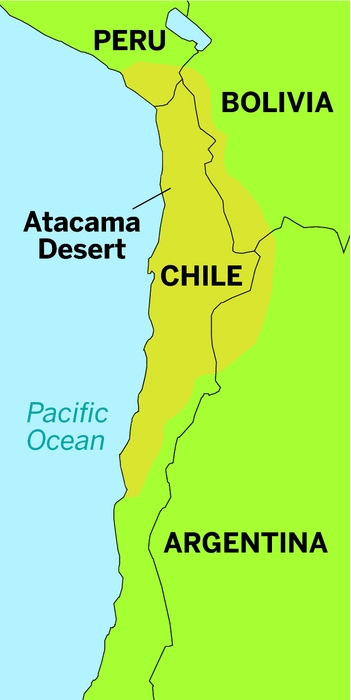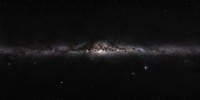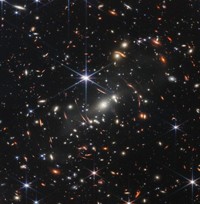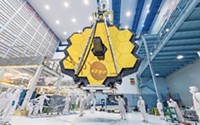Advertisement
Grab your lab coat. Let's get started
Welcome!
Welcome!
Create an account below to get 6 C&EN articles per month, receive newsletters and more - all free.
It seems this is your first time logging in online. Please enter the following information to continue.
As an ACS member you automatically get access to this site. All we need is few more details to create your reading experience.
Not you? Sign in with a different account.
Not you? Sign in with a different account.
ERROR 1
ERROR 1
ERROR 2
ERROR 2
ERROR 2
ERROR 2
ERROR 2
Password and Confirm password must match.
If you have an ACS member number, please enter it here so we can link this account to your membership. (optional)
ERROR 2
ACS values your privacy. By submitting your information, you are gaining access to C&EN and subscribing to our weekly newsletter. We use the information you provide to make your reading experience better, and we will never sell your data to third party members.
Physical Chemistry
New Heights In Astrochemistry
Chilean telescope could transform what we know about chemistry of planets, stars, and the universe
by Andrea Widener
April 8, 2013
| A version of this story appeared in
Volume 91, Issue 14

In the driest high desert in the world, where flamingos flock to mountain lakes and llamas and wild burros roam the rust-colored hills, scientists have built the world’s largest radio telescope.
Its current array of 54 antennas—soon to expand to 66—are laid out on a rare flat plain known as the Chajnantor Plateau nestled next to a picture-perfect snowcapped volcano high in the Atacama Desert in northern Chile, not far from the Bolivian border.
At 16,500 feet above sea level, the site is so high that scientists, engineers, and construction workers have to carry an oxygen supply and are limited to six-hour shifts to avoid altitude sickness. But it is also above 40% of Earth’s atmosphere, which is the next best thing to being in space.
That extreme elevation plus the incomparably dry conditions make the site in the Chilean Andes the best in the world for the new telescope, the Atacama Large Millimeter/submillimeter Array, or ALMA, which means “soul” in Spanish. ALMA’s focus on the millimeter and submillimeter wavelength range also means it is an excellent vehicle for studying the chemistry underlying the universe.
How the first molecules formed in space after the Big Bang and how chemistry drives the birth and death of stars, planets, and entire solar systems are just some of the questions that astronomers and chemists hope ALMA will help them answer. No device has allowed these phenomena to be studied in such detail before.
“We want to understand how chemistry works, not only here on Earth but on an astronomical scale,” says Anthony J. Remijan, a chemist at the National Radio Astronomy Observatory (NRAO), which oversees U.S. participation in ALMA.
The telescope is an international partnership managed and operated through the Joint ALMA Observatory. Last month at an inauguration ceremony for ALMA, which is about 1,000 miles north of Santiago, scientists and dignitaries from Chile, including the country’s president, mingled with representatives of participating countries from North America, Europe, and East Asia at ALMA’s operations center, just down the hill from the main telescope site.
As he sits on a patio overlooking the pink and blue desert valley below, Al Wootten, ALMA’s North American project scientist and an astronomer at NRAO, remembers back 30 years when the idea of a large array focused on millimeter wavelengths was just a dream of a few scientists.
Many of the astrochemical observations up to that point had come from optical telescopes. But since the advent of radio telescope arrays, more information about astronomical molecules has been found by observing characteristic millimeter and submillimeter wavelengths that molecules release as they rotate, especially in cold, dark areas of the universe.
When the idea for a telescope like ALMA was developed, “chemists were on the bandwagon from the beginning,” Wootten says.
Wootten helped with early exploration of the remote site of the new facility, about 25 miles east of the tiny tourist town of San Pedro de Atacama. He launched balloons to measure the wind at the site, and the lack of moisture made the air there so clear that you could get a view of the sky in both the Northern and Southern Hemispheres.
That the Atacama gets less rain than anywhere else on Earth was also a draw, especially for astrochemists. Water in the atmosphere absorbs and hides the millimeter and submillimeter wavelengths at which many astronomical molecules reveal their rotational spectra.
Scientists were especially intrigued by the wide, flat expanse where the telescopes sit, a geographic feature that is almost impossible to find at such high elevations. It will allow ALMA’s antennas to spread out over an almost 10-mile area in their widest configuration.
That makes ALMA the largest land-based telescope ever made. Its antennas are the most precise ever built and will work together to create a single telescope with a resolution 10 times better than that of the Hubble Space Telescope. It will collect the largest number of spectra at the widest array of wavelengths ever achieved by a single telescope, from 0.35 to 7 mm once all 10 detectors are installed.
It cost $1.3 billion to build, with contributions from countries in North America, Europe, and East Asia. Chile donated the exceptional site, and the National Science Foundation’s $500 million contribution is the most the agency has ever spent on a single project. (NSF also paid for C&EN’s trip to Chile.)
ALL ABOUT ALMA

\
◾ Name: Atacama Large Millimeter/submillimeter Array (ALMA)
◾ Telescope: When it is completed in 2013, ALMA will feature 66 antennas working together as a single telescope up to 10 miles across.
◾ Cost: $1.3 billion for construction split among North America, Europe, and East Asia. Chile donated the land.
◾ Location: 16,500 feet above sea level in the Atacama Desert in northern Chile, one of Earth’s driest places.
The advent of the new facility is a boon for astrochemistry, a relatively small but growing field that will have an especially intense boost of data from ALMA—and the field will need more chemists to help analyze these data.
“ALMA is going to be an astrochemistry machine,” says chemist Ewine F. van Dishoeck, a professor at Leiden University, in the Netherlands, who works on ALMA.
One of the most interesting questions ALMA will help answer is exactly what undiscovered molecules are out there. Scientists have already identified more than 160 molecules in space, averaging four new discoveries per year since the 1970s.
But they don’t have any idea what they will find with ALMA, which can produce more data on any particular interstellar object in a few hours than all telescopes before it combined. At least half of the spectral lines detected in early ALMA data are not associated with known molecules.
“Space is such a unique laboratory: low temperatures, especially low densities, and very harsh radiation,” van Dishoeck explains. “It makes you think about chemistry in a different way than you normally do.”
Even the most basic questions about how molecules are formed in those conditions are still up for debate. Are molecules primarily created by random chance, when atoms bump into each other inside clouds of gas and dust? Or are most formed when atoms land on the silica grains that are prominent in space?
“Every time we make a new detection, theorists have to go back to the drawing board,” Remijan of NRAO says.
That happened just recently when a team found large organic molecules in areas of space so cold that theorists had not thought it would be possible for them to form there, Remijan says. And that was before ALMA, which allows scientists to look in even more detail into cold, dark areas of the sky that are accessible only through radio telescopes.
Scientists also hope to use radio astronomy to learn more about the size range of molecules in space. They have seen molecules of up to 12 or 13 atoms with other radio telescopes, but they don’t know what the size limit is, given the constant barrage of radiation and shock waves that bombards molecules in space and can break them apart. And scientists hope to find out whether complex molecules like amino acids form in clouds or only on solid surfaces.
“What we have come to realize is that space is a really marvelous chemical laboratory, and we are extremely interested in using the interstellar laboratory to answer fundamental chemical questions,” Remijan explains. “How does chemistry on Earth match what is happening in the rest of the universe?”
Chemists use molecules on Earth to confirm the molecular origin of spectral lines coming from space. They want to know whether these lines represent transitions of already known molecules or completely new ones.
That will require a whole new generation of spectroscopists working with astronomers and theorists to sort through the data and figure out what molecules are out there. “I think ALMA is going to be a powerful instrument, but we have to remember that we have to train students in the basics so they can use ALMA,” says Lucy Ziurys, a chemist and astronomer at the University of Arizona.
The American Chemical Society Division of Physical Chemistry has recently started up an Astrochemistry Subdivision designed to bring together chemists interested in studying such problems with astronomers and physicists. “We wanted to create a chemistry home for people interested in astrochemistry,” says Arthur G. Suits, a chemist at Wayne State University and chair-elect of the new subdivision. “It is a diverse bunch, and it hasn’t really had a single home.”
Eventually, ALMA scientists would like to combine all of their data with those from their colleagues worldwide to make a chemical map of the universe that would plot what molecules are found where across the sky. That could prove invaluable for answering questions about how chemistry drives the creation of stars and planets.
Because of its high resolution, ALMA will allow scientists to look in a more detailed way than previously possible at localized distributions of chemical compounds in the clouds of gas and dust that form planets and stars.
“For every object, we are going to have 10,000 spectral lines that we are going to need to piece together to make an inventory of the chemistry in a region in which a star or planet is being born,” van Dishoeck says.
Before ALMA, scientists could see, for example, that dimethyl ether and methyl cyanide were both in an interstellar cloud at the same time, she says, but not where in the cloud they were located or how they were interacting. “We just had one integrated sort of blob, so our models may have been totally wrong.”
With ALMA, scientists will be able to pinpoint where molecules are inside clouds, says Eric Herbst, a chemist at the University of Virginia who studies the clouds of gas and dust that are the birthplaces of new stars.
“We’ll be able to know exactly where they are coming from,” Herbst says. “That could completely reshape our chemical understanding of how these objects are formed.”
ALMA should also help researchers better understand the chemistry of solar system birth and death: the cycle in which stars form from clouds of gas and dust, planets form around those stars, and the stars then explode and die, creating clouds that start the whole process again. “Sometimes I’m excited; sometimes I’m overwhelmed,” Herbst says.

For the public, some of the most exciting findings from ALMA might come from understanding how atoms and molecules form in the first place. Because it is so much more powerful than previous telescopes, ALMA will be able to look more closely than ever before at the first objects in the universe and ask questions about their chemistry. “Right after the Big Bang, in the first era of star formation, when did the first molecules form and what were they?” Ziurys says. For example, when did carbon first appear? she asks.
Geoffrey A. Blake of California Institute of Technology, a former member of ALMA’s science advisory committee, studies how planets form and how water and organic molecules end up on them, processes that can eventually lead to life. He and his colleagues hope to learn whether molecules are created in the clouds of gas and dust when a planet is still being formed or only come together later, he says.
Data he’s analyzed from ALMA’s first round of observation time—when there were just 16 antennas—might begin to help answer that question. “The data were of such high quality,” Blake says. “You could never get that from the previous generation of arrays.”
The most exciting thing for scientists, though, is that they don’t yet know exactly what they are going to find.
“A lot of the things one sees are surprises,” Herbst says. “If we knew everything ALMA was going to tell us, we wouldn’t need to use it.”





Join the conversation
Contact the reporter
Submit a Letter to the Editor for publication
Engage with us on Twitter